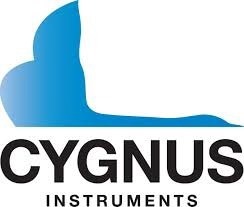Explosive dust environments are often catastrophic, causing irreversible damage and, tragically, loss of life.
When an ignition source (such as electrical or thermal equipment) is introduced into an area with a high concentration of airborne dust, often within a confined building or vessel, the extreme heat increases pressure and can cause an explosion.
Visibility in such environments is typically very low. These events are not rare; historical data shows that nearly every industry has experienced incidents involving explosive dust environments, with several devastating cases occurring even in recent years.
Industries that Store, Handle, and Process Various Materials Frequently Produce Dust.
For instance, the food processing sector often generates dusty environments, particularly during the production of sugar, flour, grains, and powdered products such as instant coffee, custard, and soup.
Beyond food, large-scale processing of metals, wood, and chemicals frequently involves handling significant volumes of powders, either as by-products or as part of various operational stages such as coating, cutting, mixing, and transportation. Similarly, recycling facilities manage substantial amounts of plastic and paper dust.
The agricultural sector also carries out many processes that expose workers to potentially hazardous levels of dust. This includes processing sites such as fertilizer plants and industrial composting facilities, as well as large-scale storage operations like grain elevators and silos.
In coal mining, processing methods produce coal dust similar to that found in industrial plants. Crushing rock disperses dust into the surroundings, and during transport, rocks may be damaged, releasing additional dust into the air.
Furthermore, coal mining can release methane gas, which accumulates in coal deposits over millennia. Methane is highly flammable and poses a serious explosion risk.
Using the Cygnus 1 Ex in Explosive Dust Environments
Numerous ignition sources may be present in these areas for various purposes. One essential tool is the corrosion thickness gauge, which uses ultrasonic testing technology to perform critical maintenance checks on machinery involved in these processes.
While maintenance is vital for ensuring safety—and can help reduce the formation of dust clouds by preventing leaks—the equipment used for these tasks must also be safe to operate in hazardous environments.
The Cygnus 1 Ex is certified for use in locations where there is a risk of fire or explosion due to the presence of flammable or ignitable substances (including gases, vapors, and dust), in concentrations high enough to form an explosive mixture.
The Cygnus 1 Ex is Intrinsically Safe by design. Intrinsic safety technology limits the energy within electronic equipment, ensuring that no arc or spark can occur, and that no component can reach a temperature capable of igniting a hazardous atmosphere, even under fault conditions. This protection applies during both normal operation and fault scenarios, at low power levels and with minimal stored energy.
Intrinsic Safety Design Criteria:
- Output energy at the terminals is limited to prevent ignition of an explosive atmosphere
- Equipment must be anti-static and incapable of retaining a static electricity charge
- Voltages must be electrically clamped to safe levels
- Redundant safety components must be utilized
- In the event of battery or component failure, it must not generate high temperatures that could cause ignition
‘Intrinsically Safe’ is an explosion protection concept used to determine the suitability of equipment for specific facility areas, referred to as ‘zones.’ The term ‘Ex’ is recognized globally when referring to explosive atmospheres and the schemes used to prevent explosions.
In accordance with IECEx, ATEX, and North American standards, intrinsically safe equipment can be used in any Zone or Division, provided it meets the appropriate Equipment Protection Level (EPL).
Regarding dust, the Cygnus 1 Ex is certified for Zones 21 and 22. Zone 21 designates areas where dust may be present occasionally during normal equipment malfunction, while Zone 22 applies to areas where dust is not usually present, but when it is, only for short periods.
Cygnus 1 Ex Features
The Cygnus 1 Ex ultrasonic thickness gauge is a valuable tool for safe structural inspection in hazardous environments. Described by customers as “versatile, multifunctional, robust, and intuitive,” this intrinsically safe gauge provides reliable user control and flexibility, removing the need for plant shutdowns or Hot Work permits.
Equipped with three measuring modes and a range of probes, the gauge can measure various materials and metals with severe corrosion or protective coatings (up to 20?mm thick), helping reduce time and costs associated with removing coatings.
For advanced users, the manual measurement mode facilitates easier and more accurate measurements in challenging areas, such as those with heavy corrosion, through versatile settings.
Similar to a flaw detector, the gauge allows manual adjustment of two gates, which can be positioned anywhere on the A-scan. Users can also change gate height, start point, and width, and take measurements from a single gate or between gates. Time-Controlled Gain (TCG) enables the application of different gain levels to improve weaker echoes.
For data storage and analysis, the device supports multiple formats, including linear, template-based, and 2-D or 3-D grid logging, with 16 available grid patterns and annotation options.
Radial points allow closer investigation of areas with heavy corrosion or interest, supporting up to 12 additional measurements around the principal measurement.

This information has been sourced, reviewed and adapted from materials provided by Cygnus Instruments Limited.
For more information on this source, please visit Cygnus Instruments Limited.